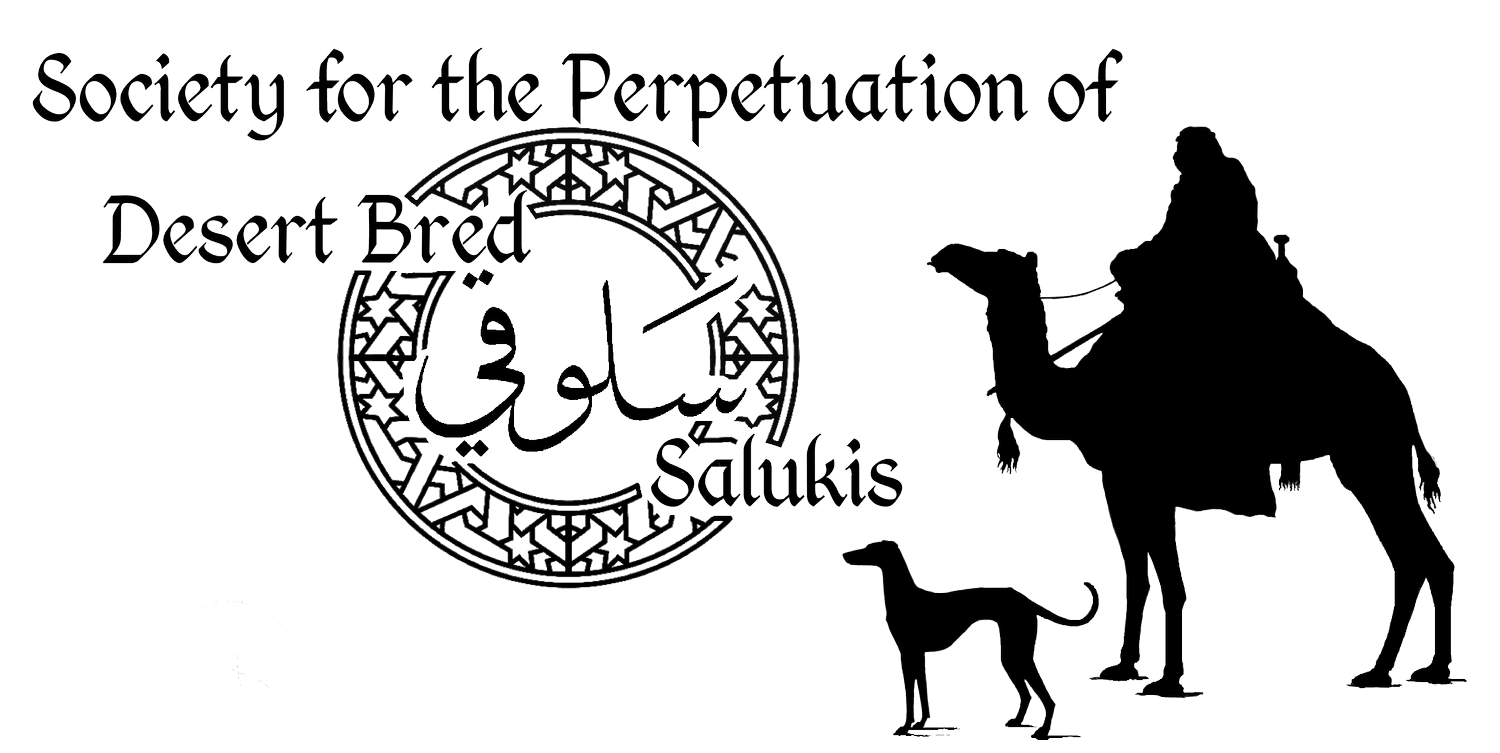Saluki - Tazi
The Society regards the word Saluki and the word Tazi as linguistic identifiers for the same hunting hound of the Middle East. The differences seen in coat, color, and degree of feathering are a combination of strain selection for a particular geographic area and coat genetics. The Saluki/Tazi has historically had two coat expressions with the smooth coat being genetically dominant. Both coat expressions occur in all populations.
The amount of feathering in the breed varies greatly, even among individuals in the same litter. Abundant tail feathering and sparse ear feathering is not unusual nor is the reverse. Equally, foot feathering will vary greatly, from no foot feathering to obvious feathering between the toes. In feathered individuals age is also a factor as increasing age and decreasing activity will often result in a heavily feathered foot.
All colors and patterns appear in this ancient hunting hound , as is appropriate for a breed that comprises 10 millennium and is found from North Africa, across the Middle East, and throughout the Asian trading routes. Regional preferences and climate requirements can result in color and coat uniformity in an area, but the genetic potential for all remains. To date, the Saluki has a complete genome.
The constant exchange of genetic material through trade, gifting, and migration has ensured the survival of the Saluki/Tazi and he, historically, has never existed inside a closed studbook. Recognizable in the archeological record, unchanged, his skills as a hunter, perfect for his environment and game, are a testimony to his perfection as the ultimate hunter across the sands, rocks, and dry plateaus of the region.
The following articles are helpful in learning about and understanding what we know, and what we do not know—yet.
MARY BETH ROGERS, SPDBS REGISTRAR